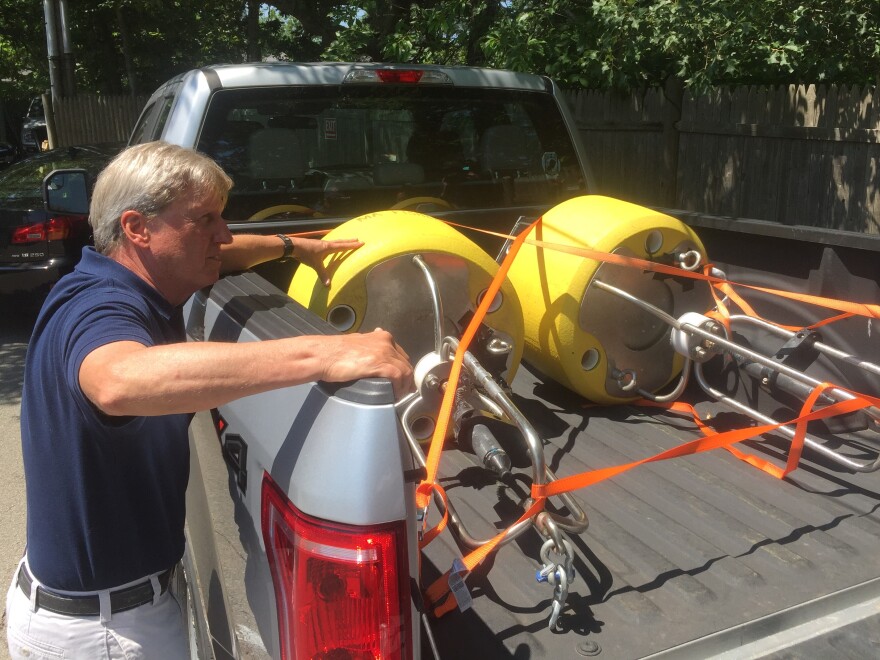Shark researchers on Cape Cod are gathering new data this summer with a focus on fine-scale predatory behavior.
“We're really drilling down deeper into trying to produce information that's going to be useful for public safety,” said state shark scientist Greg Skomal Tuesday at the Atlantic White Shark Conservancy in Chatham.
Since the 2018 fatal shark bite off Wellfleet, the emphasis has shifted to predicting when and where white sharks will be hunting for seals in shallow waters, he said.
Recent research shows white sharks off the Cape spend about half their time in waters 15 feet deep or less.
“It's no secret that the number of interactions, negative interactions, between people and sharks has been increasing,” he said.
Public and private scientists are working together to track sharks using acoustic buoys and other technologies.
One project, at the Center for Coastal Studies, is mapping the movement of tagged sharks in relation to things like sandbars and tides. The project gathers data from arrays of closely-spaced buoys off two Cape beaches: Head of the Meadow and Nauset.
Researchers are also deploying short-term video tags and balloon-mounted cameras.
Skomal said the goal is to find patterns that will allow scientists to create a shark forecast and help keep people safer in the water.
Taken alone, acoustic buoys have limitations. For one, they detect only tagged sharks. Plus, most do not transmit data in real time.
Of the 200 acoustic receivers in the water, only five transmit real-time data. Why? The cost. They’re $15,000 each, Skomal said.
He and conservancy scientist Megan Winton planned to deploy two of the real-time buoys Tuesday afternoon off Newcomb Hollow Beach and Head of the Meadow Beach. The other three have already been placed off Nauset Beach, North Beach, and Lecount Hollow Beach.
Also Tuesday, the Atlantic White Shark Conservancy outlined its new activities for the season, including a new location on MacMillan Wharf in Provincetown.
Right now, it’s a shop and a base for eco tours, but big plans are coming this winter, said Education Director Marianne Long.
She said the conservancy plans to renovate the space, improve accessibility, and install exhibits. It will open as a full museum in 2022.
“We have people reaching out from all over the country who have an interest to come here to Cape Cod because they want the opportunity to see a white shark in its natural habitat,” she said.
The shark conservancy now has its own vessel for tours; the boat was donated last winter. And the Chatham location has new exhibits, including one examining the portrayal of white sharks in the media.
Visitors are asked to make reservations online.








